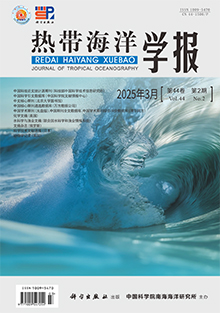Seasonal investigation of intertidal zones of Naozhou Island was conducted from April 2011 to January 2012. The results show that there were 64 species of macroalgae in this Sargasso field, including 15 species of Phaeophyta, 28 species of Rhodophyta, 20 species of Chlorophyta and one species of Cyanophyta, accounting for 23.44%, 43.75%, 31.25% and 1.56% of the total species, respectively. Among the 64 species, 43 species were thriving in spring, 24 species were emerging in summer, 29 species were active in autumn and 31 in winter. Only nine species were thriving throughout the whole year, including six species of Rhodophyta, two species of Chlorophyta and one species Phaeophyta, while there were 14 species living through three seasons. There were about 12-26 common species that can be found between two seasons and the species turnover rate was from 0.42 to 0.78, associated with higher turnover rates in spring and summer and lower rates in autumn and winter. Moreover, there were 13 dominant species but only Pterocladiella capillacea was the all-year dominant species, while Sargassum hemiphyllum and Corallina pilulifera were the dominant species over three seasons. Average biomass vary greatly with season, with the order of spring (848.14 g·m-2)> winter (378.57 g·m-2)> autumn (297.99 g·m-2)> summer (294.15 g·m-2). There is clearly vertical variation in the species distribution as the species number increases significantly from high tidal zone to low tidal zone, while the biomass show similar changing trend, indicating both species and biomass increase with water depth in the tidal zone. The Shannon-Weinner index was from 0.03 to 2.33, with an annual average of 1.10, while the Pielou's index was from 0.01 to 0.70, with an annual average of 036; the Margalef index varied from 0.15 to 1.65, with an annual average of 0.72; and the Simpson’s dominance index varied from 0.01 to 0.78, with an annual average of 0.39. The total water content of seaweeds changes ranged from 51.42% to 97.52%, with an average moisture of 85.21%. The total organic carbon content of seaweeds varied from 4.34% to 42.06%, with an average of 27.99%, indicating a strong carbon storage capacity. We find a clear negative correlation between the biomass of large seaweeds and dissolved inorganic nitrogen (DIN), with a coefficient of 0.49 (P<0.05). The lower DIN of seawater during spring and winter is coincided with microalgae thriving seasons.




